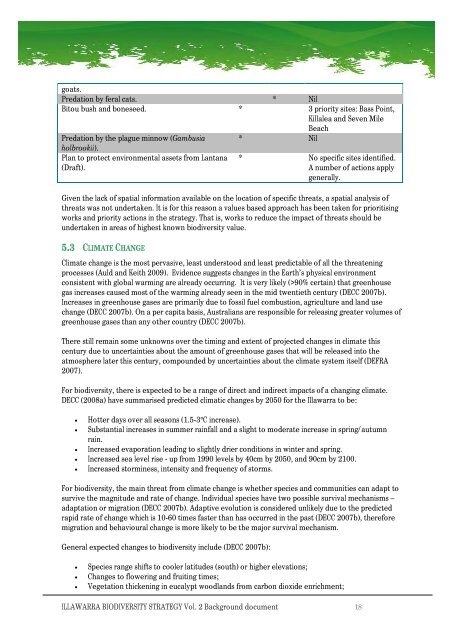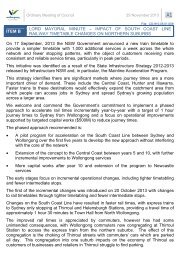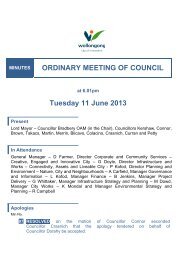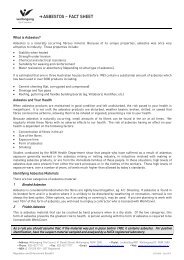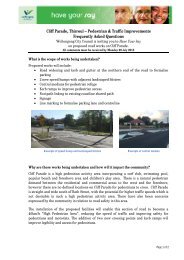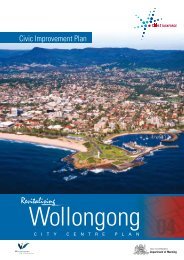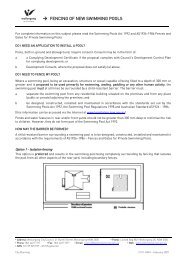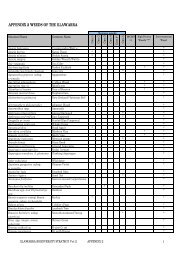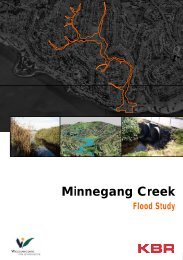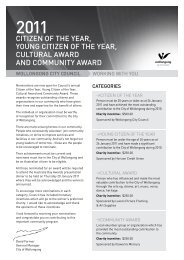ILLAWARRA BIODIVERSITY STRATEGY Vol. 2 - Wollongong City ...
ILLAWARRA BIODIVERSITY STRATEGY Vol. 2 - Wollongong City ...
ILLAWARRA BIODIVERSITY STRATEGY Vol. 2 - Wollongong City ...
- No tags were found...
Create successful ePaper yourself
Turn your PDF publications into a flip-book with our unique Google optimized e-Paper software.
goats.Predationby feralcats. * NilBitou bush andboneseed. * 3prioritysites: Bass Point,Killaleaand SevenMileBeachPredationby the plagueminnow (Gambusia * Nilholbrookii).Planto protect environmental assetsfrom Lantana(Draft).* No specific sitesidentified.Anumberof actionsapplygenerally.Giventhe lack of spatialinformationavailable on the locationof specific threats,aspatialanalysisofthreatswas not undertaken.It is for this reasonavalues basedapproachhasbeen takenfor prioritisingworksandpriority actionsin the strategy. That is, works to reduce theimpactofthreatsshouldbeundertakenin areasof highest known biodiversity value.5.3 CLIMATE CHANGEClimate change is themostpervasive,least understoodandleast predictableof all the threateningprocesses (AuldandKeith2009). Evidencesuggests changes in the Earth’s physical environmentconsistentwithglobal warming arealready occurring. It isvery likely(>90% certain) that greenhousegas increases causedmostof the warmingalready seenin themid twentiethcentury (DECC2007b).Increases ingreenhouse gases areprimarily due tofossilfuelcombustion,agriculture andlandusechange (DECC 2007b).Onaper capitabasis, Australiansare responsibleforreleasinggreatervolumesofgreenhouse gases thananyothercountry(DECC2007b).There stillremainsome unknownsoverthetiming and extentof projectedchangesinclimate thiscentury due to uncertainties aboutthe amountof greenhouse gases that willbe released intotheatmospherelater this century, compoundedby uncertainties aboutthe climate system itself (DEFRA2007).For biodiversity, there is expectedto be arange ofdirect and indirect impactsofachanging climate.DECC(2008a) havesummarisedpredictedclimaticchangesby 2050 for the Illawarra to be:• Hotter daysoverallseasons(1.5-3°C increase).• Substantial increases in summer rainfallandaslight tomoderate increase inspring/autumnrain.• Increasedevaporation leading to slightly drierconditions in winterand spring.• Increasedsealevelrise -upfrom 1990 levels by 40cm by2050, and90cm by 2100.• Increasedstorminess,intensity andfrequency ofstorms.For biodiversity, the mainthreat fromclimatechange is whether species andcommunities canadapt tosurvive themagnitudeandrateof change.Individual species havetwo possible survivalmechanisms –adaptationor migration (DECC 2007b).Adaptive evolutionis considered unlikely due to thepredictedrapidrateof change whichis 10-60 timesfaster thanhas occurredin the past(DECC 2007b), thereforemigrationandbehaviouralchange ismore likely to bethemajorsurvivalmechanism.Generalexpectedchangesto biodiversity include (DECC 2007b):• Speciesrangeshiftsto cooler latitudes (south)or higher elevations;• Changes toflowering andfruiting times;• Vegetation thickeningin eucalyptwoodlands from carbon dioxide enrichment;<strong>ILLAWARRA</strong> <strong>BIODIVERSITY</strong><strong>STRATEGY</strong><strong>Vol</strong>.2Background document 18


